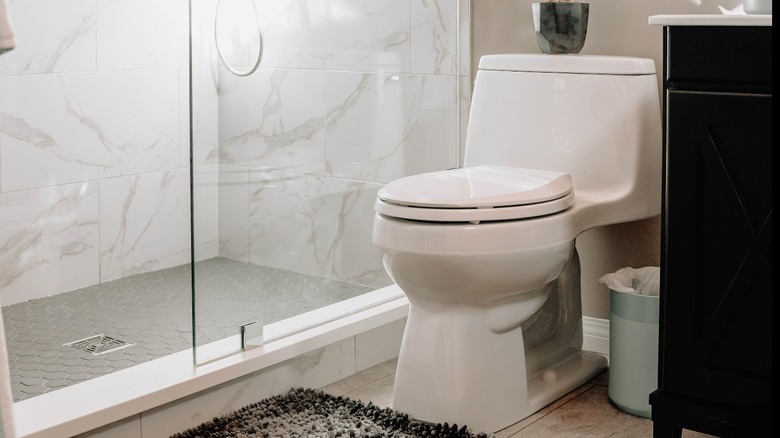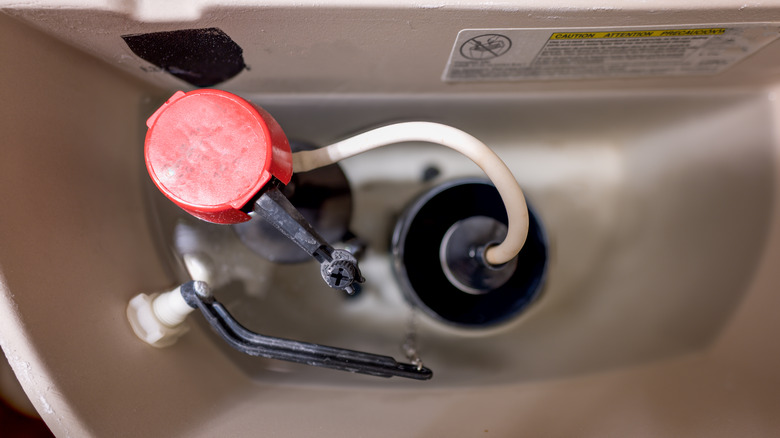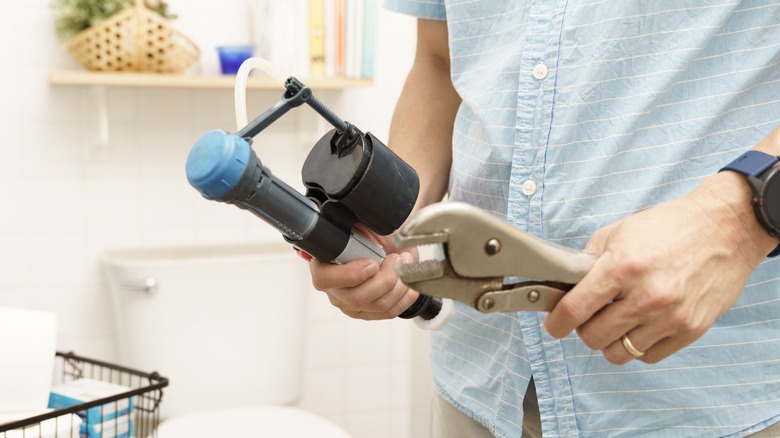Why Is Your Toilet Tank Slow To Refill And How Can You Fix It?
The average time for a toilet to fill ranges from 30 seconds to two minutes. So if you're still waiting after that tie stamp, then it's likely due to a faulty fill valve, which is the primary cause of a slow-filling tank. The most common reasons for a fill valve to slow down or fail to fill the tank after flushing are the accumulation of debris and the valve's age. Over time, debris can build up in the water system, which affects various components like the valve body, supply line, and shut-off valve. This build-up can restrict the flow path of water, which results in a slower filling toilet. Fill valves that are over seven years old may also experience decreased performance due to wear and tear.
Before diving into taking your toilet apart, it's worth checking the water shut-off valve, located in the back of your toilet. If the valve isn't fully open, this could be the culprit and can potentially solve your slow-filling toilet issue without any further intervention.
Flush the fill valve first
It's recommended that you first try to flush out the fill valve to remove any possible debris before deciding to fully replace it. Start by locating the water shutoff valve, which is normally positioned near the back of the toilet. Turn it clockwise to stop the water flow and flush the toilet to remove most of the water from the tank. To access the fill valve, grip and hold the shaft of the cap on top of the valve. With your other hand, twist the cap and lever arm counterclockwise to remove it. Depending on the specific valve, you may need to push the cap down while twisting it off. Once it's removed, the fill valve will be exposed for cleaning.
To flush out the fill valve, put a small cup upside down over the valve opening to prevent water from getting everywhere, and then turn the water supply back on. The sudden flow of water should help dislodge any sediment or debris that may be keeping the valve from properly functioning. After cleaning, reattach the cap by twisting it clockwise to secure it in place and flush the toilet to check if the cleaning resolved the issue. If not, then it's time for a replacement.
How to replace your fill valve
To remove your old fill valve and install a new one, start by shutting off the water supply to the toilet and flushing it to empty the tank. Next, disconnect the water by loosening the clamp on the hose that's attached to the fill valve. Remove the water line from the overflow tube, which channels water back into the toilet to refill it after each flush. Locate the nut beneath the tank and use pliers to loosen and remove it. The old fill valve should easily lift out of the tank.
To install the new fill valve, begin by sliding the rubber washer onto the threaded end of the valve and placing it in the toilet tank. Make sure that the water fill hose has a clear and unobstructed path to the main connection. If you notice any kinks in the fill hose, rotate the fill valve until they straighten out. Once everything is aligned, tighten the nut and reconnect the main water line as well as the hose that sits above the overflow tube. Turn the water supply back on and check for any leaks. Don't forget to calibrate the new fill valve by following the provided instructions. This ensures that the float will shut off the fill valve when the water reaches around a ½ to ¾ of an inch below the top of the overflow tube.


